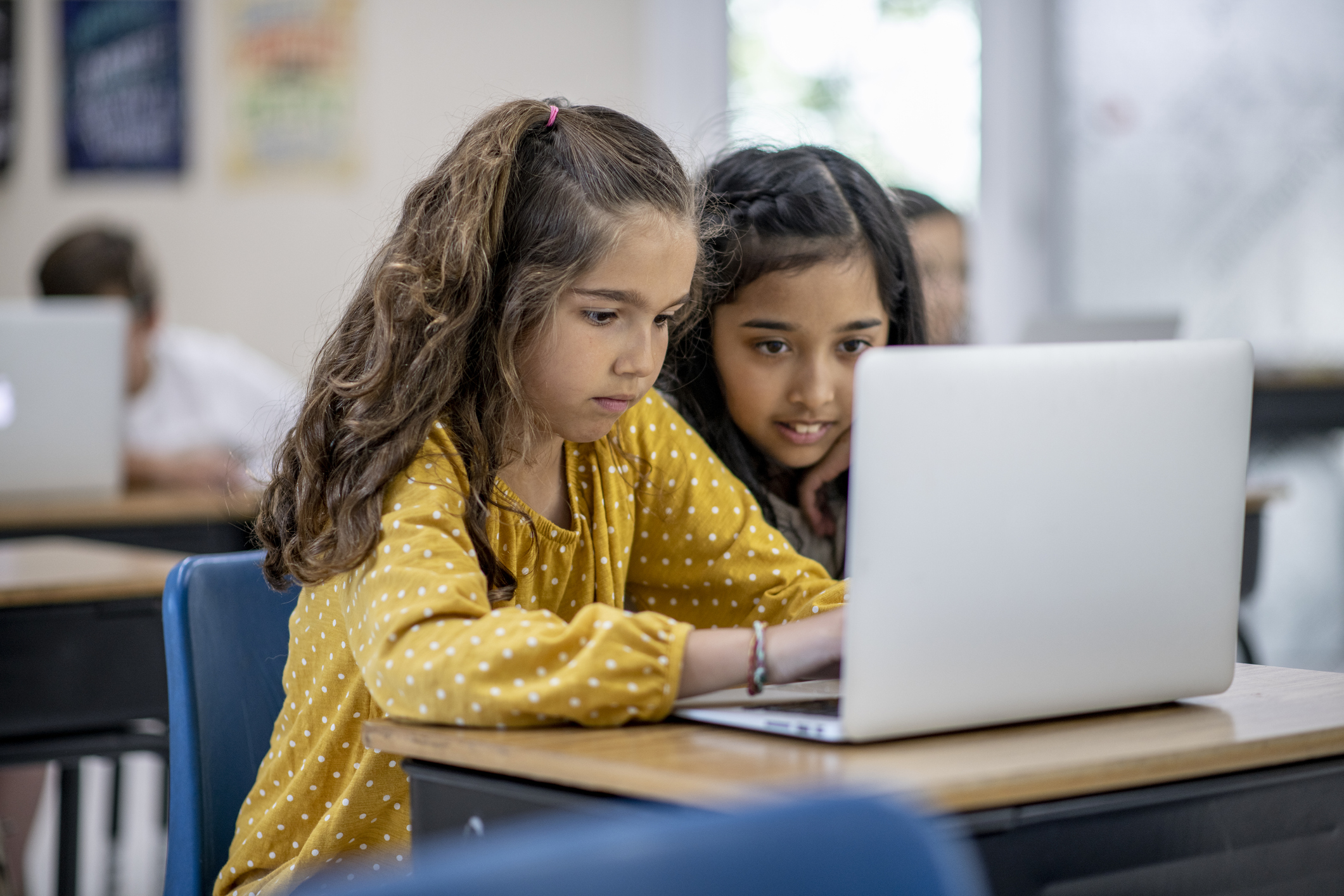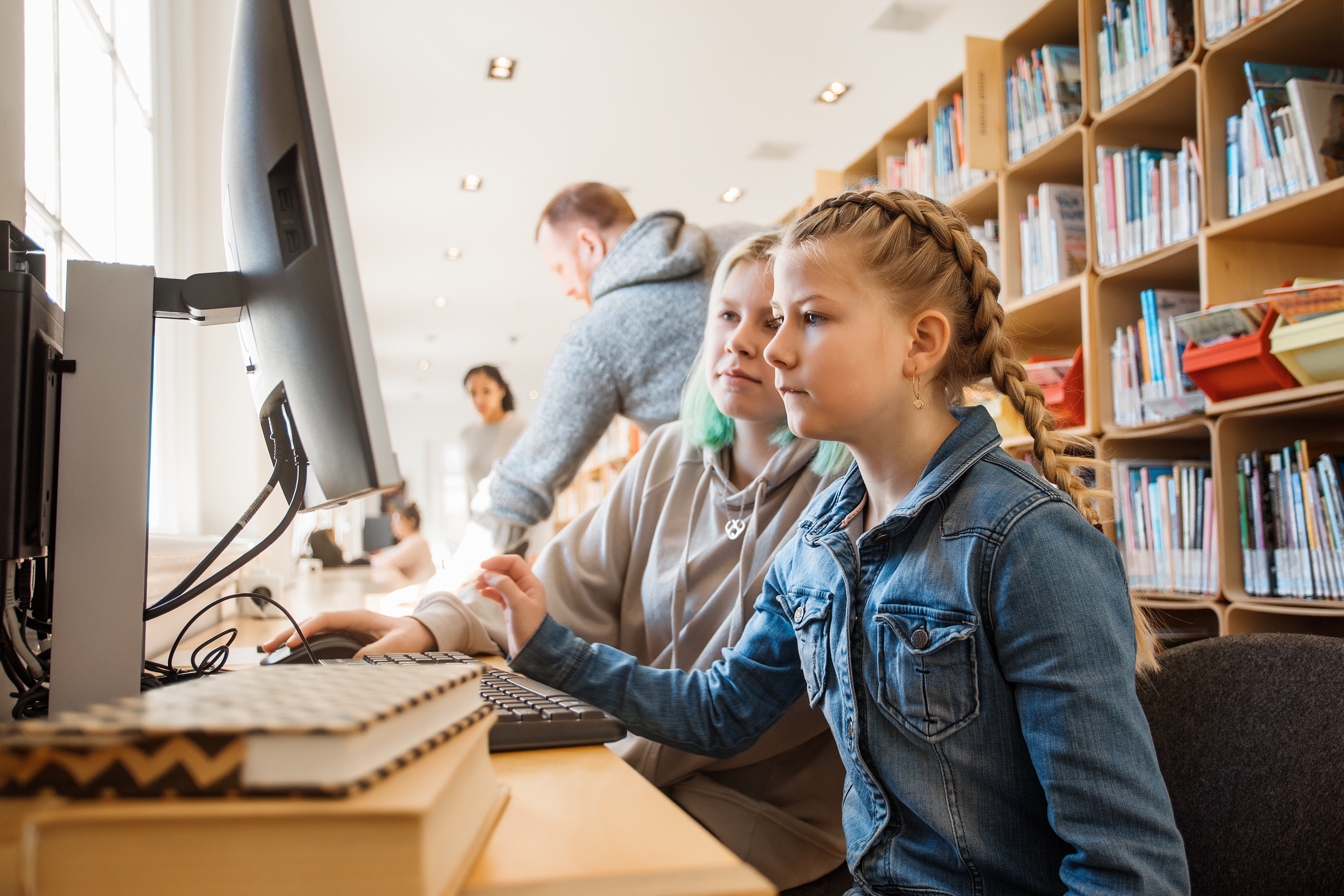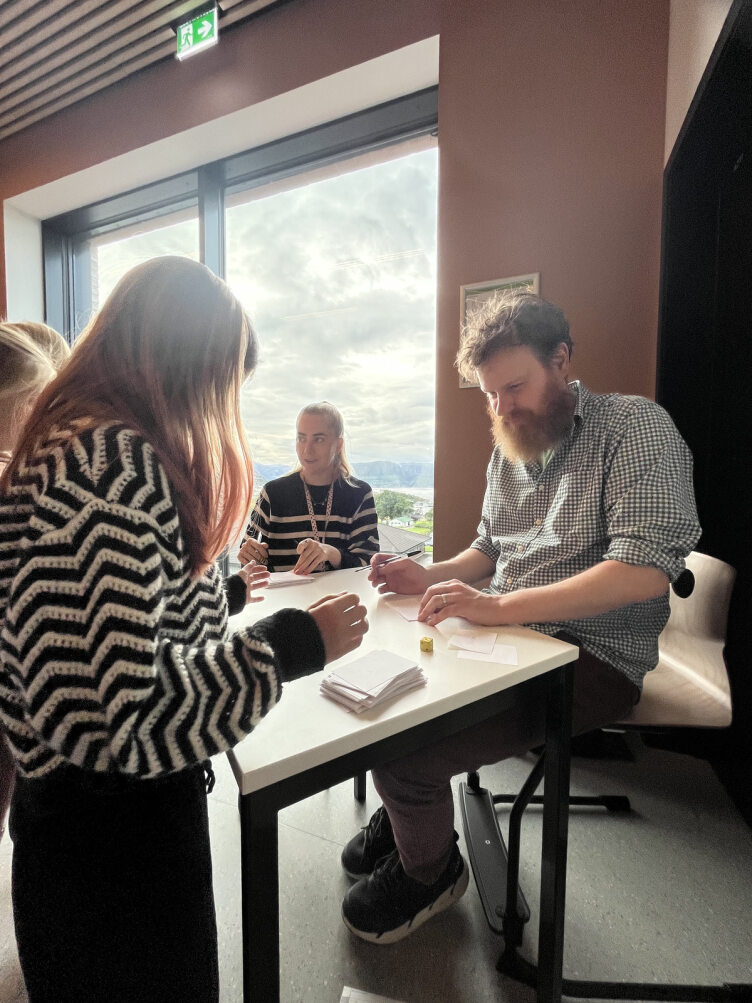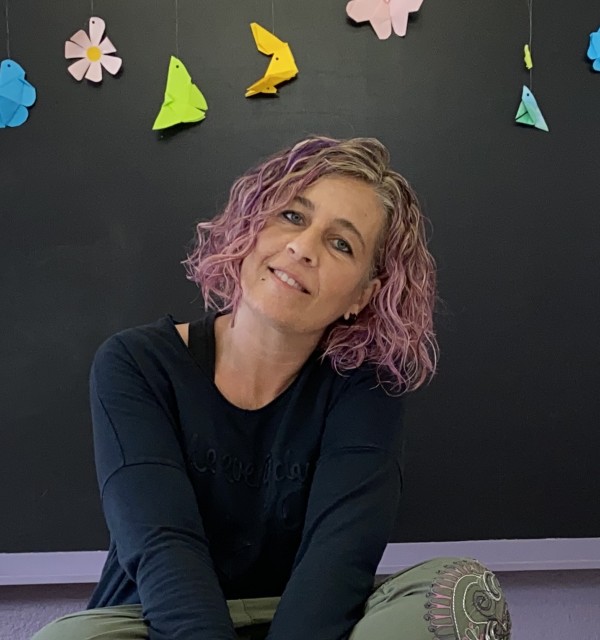Literacy instruction and creative writing are combined in AILIT, by cutting-edge use of AI and principles from game design.
In AILIT, our team of researchers, teachers and web developers collaborate with the overarching aim of improving motivation and literacy skills in young learners. By combining knowledge from the latest research on literacy and motivation with cutting-edge research on artificial intelligence and principles from game design, we will develop a digital platform, designed to give children the opportunity to write collaboratively across borders. The overarching idea is that this form of collaborative writing will lead to more motivating and engaging literacy practices in schools.
AI Literacy Network in Primary Education
EUR 400 000 from Erasmus+ Co-funded by the European Union

2022 - 2025
The prototype of the digital platform is now live! It allows you to get a feel for how students can read, write and collaborate on the platform. Feel free to take a look and explore it by clicking the button below.
Combining creative writing and literacy instruction by AI and game design
Fostering children's literacy skills and motivation for learning, are the two overarching goals for the AILIT team.
The ability to read and write are among the most fundamental skills children need to learn in school. Their literacy skills hold enormous consequences for their lives, now and in the future.
Still, for many children, literacy acquisition is unfortunately not straightforward. An important key in developing these skills, has to do with the child's motivation for reading and writing activities. Many young learners lack this important motivation for their school work. This affects their skill development, and their interest in learning.

School students lack an authentic audience for their texts
Free, creative writing is seen by several scholars as one skill area where children can act freely, develop their creativity and develop their identity as a writer. However, writing instruction in schools, especially in the lower grades, is often quite repetitive and dominated by "artificial" tasks without authentic audiences.
The lack of an authentic audience for their texts, and of engaging reading material, are often put forward as reasons for students' lack of motivation for writing and reading.
Implementing digital writing practices from children's lives to foster literacy in school
Out of school, on the other hand, many students write purposefully and creatively on different media platforms such as games or in social networks. Such applications and platforms are also increasingly imported into the classroom, but then mostly without a didactic apparatus surrounding them, making it unclear what the added value of the school environment is.
As researchers in the Erasmus+ project AILIT, we are interested in finding out if, and how, we can combine the two seemingly opposed strands of "creative writing" and "literacy instruction" in an efficient way. This will be done by developing a platform that borrows elements from both game design and from literacy teaching.
Reading texts from children in other countries can motivate young students to learn more about the person who wrote the original text, and about their country or society.
Inspired by online shopping-recommendations
The students participating in AILIT are between 8 and 11 years of age, and attend schools in Norway, Portugal, Spain and Ireland. The digital platform developed by the AILIT research team will give the students the opportunity to write texts in their own language and, through the support of an AI-driven game platform, have their texts translated and shared with their peers in different schools and countries.
Students on the receiving end will receive texts selected by a digital "recommended" function, similar to those found in online shops. This ensures that students receive texts that suit their interests. They will be able to not only read, but also comment on and edit the texts they receive that were originally authored by a child somewhere else in the world.
Writing to and together with other children can benefit motivation
When students get to work on and edit machine translated texts in order to improve them, they will take part in a formative literacy experience that not only is of high value in itself, but that also differs from simply writing their own texts, and if they were just reading other students' texts.
Reading texts from children in other countries can also potentially motivate young students to learn more about the person who wrote the original text, and about their country or society. Different socio-cultural perspectives will be inherent in the texts they receive, which can serve as valuable building blocks for intercultural discussions in the classrooms.
The texts are adapted to the student's skill level
The artificial intelligence will not only ensure that the texts match the students' interests, but also make sure that the students will receive texts by peers on the same skill-level. In this way, each student can write at their level, and still find an audience interested in reading the text. Even the weakest writers may experience a sense of mastery, and build an identity as a writer and reader. Such strengthened writer and reader self-concepts are important factors contributing to the development of literacy skill.
AILIT can also lead to a more inclusive classroom practice. Due to the adaptive nature of the tool, all students can work on the same task, which gives a sense of inclusion to those students who have special needs, who might otherwise be taught apart from the rest of the class.
Benefits for the teachers
AILIT also holds several promising features for teachers. The teacher will always be the most important learning resource in the classroom, and is expected to read the students’ texts before evaluating whether they are ready to be shared with other students. However, AILIT gives the teachers access to AI-generated reports that will complement the teacher's own assessment of the students' texts.
The digital scaffolding material can also constitute a welcome break in busy classrooms. The digital scaffolding material allows students to self-teach, and may potentially give the teacher more time to focus his or her guidance on students' with special needs.
AILIT literature review
Read a description of the educational systems of the AILIT countries, the theoretical background for the project and learn about common ways of scaffolding students' writing in the participating countries.

The AILIT project is an Erasmus + cooperation partnership aiming to prototype an AI-powered platform scaffolding student’s writing and letting students read and edit each other’s texts across borders through machine translation. The project will develop both engaging scaffolding material (video and other media) and an engaging game design.
The literature review has been prepared by the five university partners. It presents some background for the project.
• Part I describes the educational systems of the different countries where the platform will be piloted.
• Part II describes the theoretical background for the project.
• Part III presents some common ways of scaffolding students’ writing in the participating countries.
Participating in AILIT motivates children to write
Pupils and teachers at Fjelltun school in Norway are key players in the development of AILIT. It is motivating for the children's writing when they communicate with peers in other countries, the teachers say.

In the research projects AILIT, Reading Centre researchers will develop a digital platform made to promote children's motivation for reading and writing. In order to succeed, the research team depend on input and help from both students and teachers.
AILIT is an international project, where researchers and schools in several countries collaborate. The pupils write texts which are translated and shared with children in the other countries. The children then read and collaborate on each other's texts.
AILIT researchers will also try out a recommendation system, similar to that found on Netflix or Spotify, in order for the children to receive texts which they may be particularly interested in. Perhaps a Spanish boy who plays soccer, will enjoy reading and further developing a text written about soccer by a Norwegian pupil?
The aim is both to find out how artificial intelligence can be used for this type of teaching, and not least that the students will be able to write texts that have real readers, which is again important for the writing to be experienced as meaningful and to be motivating for the students.
When the teachers wanted to get started early, they turned to letter writing!
The Norwegian Fjelltun school is participating in the project. Pupils and teachers both give input on how the platform could look, and are engaged in trying out different solutions.
However, while research takes time, teachers are used to getting things done fast. So when the school joined the project, the teachers at Jørpeland wanted to seize the opportunities straight away - earlier than the assignments from the university were ready.
"We saw some good opportunities in collaborating with the other schools, so we decided to exchange letters with a Spanish school," says Bente Fiskå at Fjelltun School.
Fiskå explains how sixth grade pupils have used Google Translate in various ways. They have written letters in Norwegian, which they then translated into English in Google Translate. The letters were then sent digitally to Spain, in both Norwegian and English. The classes have also received letters in Spanish and used Google Translate to translate the letters into Norwegian.
"There is a lot of learning involved in reading the translation and checking its quality. For example, there were greater challenges in getting understandable letters from Spanish to Norwegian, than from Norwegian to English," says Fiskå.

Motivational for the pupils
The Norwegian children were enthusiastic about the idea of writing letters to their Spanish partners.
"They found it exciting to write for a Spanish class, and they enjoy hearing about Spanish school life and everyday life. We have also talked a bit about what we can tell the Spanish children about our lives in Norway," says teacher Janne Kristin Kåsen.
Writing to real recipients is an important principle for motivating writing teaching, according to the AILIT project manager Arild Michel Bakken, an associate professor at the Reading Centre.
"Many children struggle to learn to read and write. We know that motivation is extremely important for students to want to write, and thus learn more," he says.
At school, students tend to write texts that have little consequence outside of the classroom setting. These texts can therefore be perceived as having little meaning - and thus they are often seen as not very motivating to write.
"The idea behind the AILIT project is that children should write texts that have real recipients, precisely because this is meaningful and motivating. The teachers at Fjelltun have understood this when they at such an early stage of the project have already seized the opportunity to create meaningful writing experiences for their pupils. It is precisely this way of thinking that underlies the project, and I would like to praise these teachers for taking this initiative," he says.
Important lessons about technology
According to the two teachers Fiskå and Kåsen, AILIT provides a number of advantages for the participants, both now and in the future.
"The pupils learn how to communicate in English with people in other countries. Our participation in the project has also lead to useful experiences and conversations about technology and artificial intelligence. For example, we are all made aware of how recommendation systems work, which is good to know," says Fiskå.
The teachers say that even though research and school are in many ways two different worlds, collaborating with the Reading Centre researchers has been rewarding.
"This is real participation, both for us and the children! We look forward to learning and helping to develop the platform. We have given input on how the platform should be designed so that it works for the pupils. We find that the researchers in the project are responsive to our input. At the same time, we believe that we will learn a lot ourselves from this," says Kåsen.
Not least, they look forward to the possibilities the final tool will provide when it comes to literacy and writing instruction.
"As teachers, we are always preoccupied with how we can motivate our pupils to write. Digital tools may also be helpful in that they may relieve the teacher, so that we can use more time on individual students," says Fiskå.
Participating institutions
- UiS (koordinator)
- Universidade de Aveiro
- Universitat Autonoma de Barcelona
- Dublin City University
- Universiteit Twente
- Fjelltun skole
- Scoil Mhuire Gan Smal
- Escola Les Llisses
Erasmus+ is the EU's programme to support education, training, youth and sport in Europe. The 2021-2027 programme places a strong focus on social inclusion, the green and digital transitions, and promoting young people’s participation in democratic life. It supports priorities and activities set out in the European Education Area, Digital Education Action Plan and the European Skills Agenda. The programme also supports the European Pillar of Social Rights, implements the EU Youth Strategy 2019-2027 and develops the European dimension in sport. Go to Erasmus+
The AILIT team:
Project manager
National Centre for Reading Education and Research
Administrative manager
Faculty Administration UH
Administration SLF
















